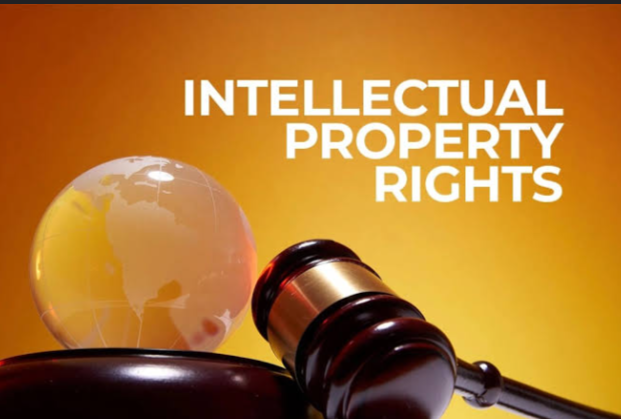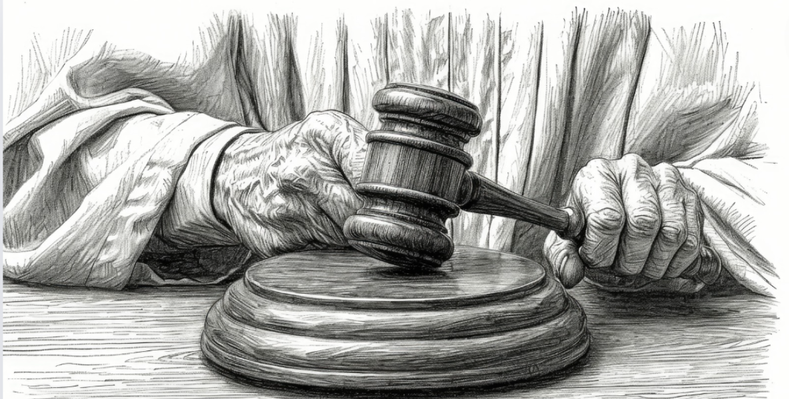Author: Mamta, K.E.S. Shri Jayantilal H. Patel Law College, Mumbai
Abstract
Intellectual Property Rights (IPR) are the foundational elements that underpin the legal structure for protecting innovations, creative works, and brand identities in today’s globalized economy. These rights provide inventors, artists, and businesses with the exclusive authority to control the use, distribution, and commercialization of their intellectual creations. The significance of IPR extends beyond merely securing economic returns for creators; it plays a pivotal role in fostering an environment where innovation and creativity can thrive without the threat of unauthorized exploitation.
The abstract also underscores the dynamic nature of IPR in responding to technological advancements and globalization. As industries evolve and new forms of intellectual property emerge, the legal frameworks governing IPR must adapt to protect these innovations effectively. Landmark case laws and international agreements like the Agreement on Trade-Related Aspects of Intellectual Property Rights (TRIPS) have shaped the global landscape of IPR, establishing standards that balance the interests of creators, businesses, and the public. This article provides an in-depth analysis of IPR, exploring its legal underpinnings, practical applications, and the evolving challenges it faces in a rapidly changing world.
To the Point
Intellectual Property Rights (IPR) are essential legal frameworks that protect creators’ rights over their intellectual creations. These rights, including patents, copyrights, trademarks, and trade secrets, are crucial for encouraging innovation, ensuring fair competition, and securing economic benefits. This article explores the significance of IPR, its legal foundations, and its impact on the global economy, supported by relevant case laws and practical implications.
Introduction
Intellectual Property Rights (IPR) are crucial for protecting innovations, creative works, and brand identities in today’s global economy. They grant inventors, artists, and businesses exclusive control over the use, distribution, and commercialization of their intellectual creations, fostering an environment conducive to creativity and innovation.
In an era where intangible assets often outweigh physical ones, IPR plays a vital role. Patents offer temporary monopolies on technological inventions, incentivizing further research. Copyrights protect artistic and literary works, ensuring creators are rewarded for their contributions. Trademarks safeguard brand identity, helping businesses build consumer trust. Trade secrets protect confidential business information, providing a competitive advantage.
The dynamic nature of IPR adapts to technological advancements and globalization, as evidenced by landmark case laws and international agreements like TRIPS. This article delves into the legal framework of IPR, its practical applications, and the challenges it faces in a rapidly evolving world.
Legal Proceedings in IPR
1 Filing a Complaint
Initial Steps: The process begins when the aggrieved party files a complaint or petition with the relevant court or tribunal. This document outlines the nature of the dispute, the claims made, and the relief sought.
Jurisdiction: The choice of forum is crucial. IPR disputes are typically addressed in specialized courts or tribunals, such as intellectual property courts, depending on the jurisdiction. In India, for instance, IPR cases can be heard in High Courts or specialized IP Tribunals.
2 Evidence Collection
Discovery Process: Parties must gather and exchange evidence relevant to the case. This may include documents, witness statements, and expert opinions. In many jurisdictions, there are formal discovery rules that dictate how evidence must be disclosed.
Expert Testimony: Expert witnesses may be called to provide opinions on technical aspects of the case, such as the novelty of a patent or the similarity of trademarks.
3 Hearings and Trials
Pre-Trial Hearings: Before the main trial, courts may hold pre-trial hearings to resolve procedural issues, such as the admissibility of evidence and the scope of the dispute.
Trial: During the trial, both parties present their evidence and arguments. The court examines the evidence, hears witness testimony, and considers legal arguments.
Judgment: After considering the evidence and arguments, the court issues a judgment. The judgment may include orders for injunctions, damages, or other remedies.
4 Appeals
Appeal Process: Parties dissatisfied with the trial court’s decision may appeal to a higher court. The appellate court reviews the case to determine if there were errors in the application of the law or procedural issues.
Supreme Court Review: In some jurisdictions, cases of significant importance may be reviewed by the highest court, such as the Supreme Court, which has the final say on legal issues.
5 Enforcement and Remedies
Injunctions: Courts may issue injunctions to prevent further infringement or misuse of intellectual property rights.
Monetary Damages: The court may award damages to compensate the injured party for financial losses resulting from the infringement.
Account of Profits: In some cases, the court may order the infringer to account for profits made from the infringement.
Case Laws in Intellectual Property Rights (IPR)
Case laws play a pivotal role in shaping the landscape of Intellectual Property Rights (IPR). They establish precedents that guide the interpretation and application of IPR laws. Here’s a detailed look at significant case laws across various domains of IPR:
1. Patents
1.1 Alice Corp. v. CLS Bank International (2014, U.S. Supreme Court)
Overview: The U.S. Supreme Court addressed the patentability of abstract ideas in this landmark decision. Alice Corp. held patents on a method for mitigating settlement risk by using a computer.
Legal Issue: Whether the claims were directed to an abstract idea and thus not eligible for patent protection.
Decision: The Court held that the claims were directed to an abstract idea and did not transform into a patentable invention through the mere use of a computer. The decision established a two-part test for patent eligibility, focusing on whether the claims are directed to a patent-eligible concept and, if so, whether the claims add something significant beyond the abstract idea.
Impact: This case significantly impacted software and business method patents, narrowing the scope of patentable subject matter and setting a precedent for evaluating abstract ideas.
1.2 Novartis AG v. Union of India (2013, Supreme Court of India)
Overview: The Supreme Court of India examined the patentability of the cancer drug Gleevec (imatinib mesylate) under Section 3(d) of the Indian Patents Act, which excludes “new forms” of known substances unless they demonstrate enhanced efficacy.
Legal Issue: Whether the new form of Gleevec represented a significant improvement over existing forms and thus qualified for patent protection.
Decision: The Court ruled that Novartis’s application failed to show the enhanced efficacy required under Section 3(d) and upheld the Patent Office’s denial of the patent.
Impact: This case reinforced the stringent standards for pharmaceutical patents in India, focusing on the requirement for substantial innovation and its implications for access to medicines.
2. Copyrights
2.1 Sony Corp. of America v. Universal City Studios, Inc. (1984, U.S. Supreme Court)
Overview: This case involved the legality of the home videotaping of television programs using Sony’s Betamax VCR.
Legal Issue: Whether Sony’s sale of VCRs constituted contributory copyright infringement.
Decision: The Supreme Court ruled that the sale of VCRs did not constitute contributory infringement because the VCRs had substantial non-infringing uses, such as recording home videos.
Impact: This decision established the “substantial non-infringing use” doctrine and had a profound effect on copyright law, influencing how new technologies are assessed under copyright standards.
2.2 Indian Performing Right Society Ltd. v. Sanjay Dalia (2012, Supreme Court of India)
Overview: The case addressed the rights of the Indian Performing Right Society (IPRS) to collect royalties for public performances of copyrighted music.
Legal Issue: The enforcement of IPRS’s rights to collect royalties and whether public performance constituted copyright infringement.
Decision: The Supreme Court upheld the IPRS’s right to collect royalties, emphasizing the importance of protecting the economic rights of authors and composers.
Impact: The ruling reinforced the role of collecting societies in managing and enforcing performance rights, impacting how royalties are handled in India.
3. Trademarks
3.1 Qualitex Co. v. Jacobson Products Co. (1995, U.S. Supreme Court)
Overview: This case involved the registration of a color trademark for press pads used in dry-cleaning presses.
Legal Issue: Whether a color can be registered and protected as a trademark.
Decision: The Supreme Court ruled that color can be registered as a trademark if it has acquired distinctiveness and secondary meaning. The Court found that Qualitex’s color had achieved distinctiveness in the market.
Impact: This case expanded trademark protection to include color, setting a precedent for how non-traditional trademarks are evaluated.
3.2 Cadila Health Care Ltd. v. Cadila Pharmaceuticals Ltd. (2001, Supreme Court of India)
Overview: The case dealt with the similarity between trademarks of two pharmaceutical companies and the likelihood of confusion in the marketplace.
Legal Issue: Whether the similarity between the marks created a likelihood of confusion among consumers.
Decision: The Supreme Court ruled in favor of protecting trademarks that could cause confusion among consumers. The decision emphasized the need for distinctiveness and non-deceptiveness.
Impact: This ruling underscored the importance of preventing consumer confusion in trademark cases, impacting trademark enforcement in India.
4. Trade Secrets
4.1 PepsiCo, Inc. v. Redmond (1995, U.S. Court of Appeals for the Seventh Circuit)
Overview: The case involved the misappropriation of trade secrets when a former PepsiCo employee joined a competitor and used confidential information.
Legal Issue: Whether the former employee’s use of trade secrets constituted unfair competition and whether an injunction should be issued.
Decision: The court issued an injunction to prevent the use of trade secrets, ruling that the information was protectable and that the former employee’s actions constituted misappropriation.
Impact: This decision highlighted the enforcement of trade secret protections and the role of injunctions in preventing unfair competition.
4.2 Vishaka Industries v. V.M. Sons (2008, Supreme Court of India)
Overview: The case focused on the misappropriation of trade secrets and the enforcement of confidentiality agreements.
Legal Issue: Whether the defendant misappropriated trade secrets and violated confidentiality agreements.
Decision: The Supreme Court upheld the protection of trade secrets and enforced confidentiality agreements, emphasizing the importance of safeguarding business secrets.
Impact: The ruling reinforced the enforcement of trade secret protections and confidentiality agreements in India.
5. Industrial Designs
5.1 Sundaram Finance Ltd. v. The Registrar of Designs (2002, Madras High Court)
Overview: The case involved the registration of an industrial design and addressed issues of originality and novelty.
Legal Issue: Whether the design met the criteria for originality and novelty required for registration.
Decision: The court upheld the registration of the design, finding that it satisfied the criteria for novelty and distinctiveness.
Impact: This case affirmed the standards for design registration and the importance of demonstrating originality.
5.2 Indian Oil Corporation Ltd. v. The Director of Patents and Designs (2011, Delhi High Court)
Overview: The case addressed the validity of a design registration and the criteria for determining novelty.
Legal Issue: Whether the design registration met the requirements for novelty and originality.
Decision: The Delhi High Court ruled on the requirements for design registration, reinforcing the need for clear evidence of originality and non-obviousness.
Impact: This decision clarified the standards for design registration and emphasized the importance of demonstrating novelty in industrial designs.
Conclusion
In the ever-evolving realm of Intellectual Property Rights (IPR), case laws play a fundamental role in shaping legal principles and guiding the application of statutes. From patent eligibility to the protection of trade secrets, these judicial decisions offer clarity and establish precedents that influence future cases.
The analysis of significant cases, such as Alice Corp. v. CLS Bank International and Novartis AG v. Union of India, highlights the courts’ approaches to interpreting complex issues like abstract ideas and patentability standards. Similarly, decisions like Sony Corp. of America v. Universal City Studios, Inc. and Indian Performing Right Society Ltd. v. Sanjay Dalia illustrate the evolving nature of copyright protection and the balance between creators’ rights and technological advancements.
Trademark cases, such as Qualitex Co. v. Jacobson Products Co., show how non-traditional trademarks like color can be protected, while Cadila Health Care Ltd. v. Cadila Pharmaceuticals Ltd. underscores the importance of distinctiveness in preventing consumer confusion. In trade secret law, cases like PepsiCo, Inc. v. Redmond and Vishaka Industries v. V.M. Sons emphasize the significance of safeguarding confidential business information from unfair competition.
Industrial design cases, including Sundaram Finance Ltd. v. The Registrar of Designs and Indian Oil Corporation Ltd. v. The Director of Patents and Designs, further demonstrate the courts’ approach to evaluating originality and novelty.
In the modern knowledge economy, where intangible assets often surpass the value of physical ones, the role of IPR is more critical than ever. Patents protect technological inventions, offering inventors a temporary monopoly to encourage further research and development. Copyrights secure artistic and literary works, ensuring that creators are compensated for their contributions to culture. Trademarks protect brand identity, helping businesses build consumer trust and differentiate themselves in the marketplace. Trade secrets safeguard confidential business information, providing a competitive edge to companies that innovate in processes and methodologies.
Overall, these case laws reflect a balanced approach to protecting intellectual property while adapting to technological and commercial developments. They serve as essential tools for legal practitioners and businesses in navigating IPR disputes and ensuring the effective protection and enforcement of intellectual property rights. Understanding these precedents equips stakeholders with the knowledge to anticipate legal challenges and uphold their intellectual property interests in an increasingly complex landscape.
Frequently Asked Questions (FAQS)
What are Intellectual Property Rights (IPR)?
Intellectual Property Rights are those legal rights that protect the creations of the mind, such as literary, designs, inventio, and artistic works, designs, names, names, and images used in commerce.
Why is IPR important?
IPR is important because it incentivizes innovation and creativity by granting creators exclusive rights to their intellectual property, allowing them to monetize and protect their work.
What are the main types of IPR?
The main types of IPR include patents (for inventions), copyrights (for literary and artistic works), trademarks (for brand identifiers), and trade secrets (for confidential business information).
How long does IPR protection last?
The duration of IPR protection varies by type: patents typically last 20 years, copyrights last for the life of the author plus 70 years, trademarks can last indefinitely with renewal, and trade secrets last as long as they remain secret.
Can IPR be enforced internationally?
Yes, IPR can be enforced internationally through various treaties and agreements, such as the TRIPS Agreement. However, enforcement mechanisms and protections may vary by country.




